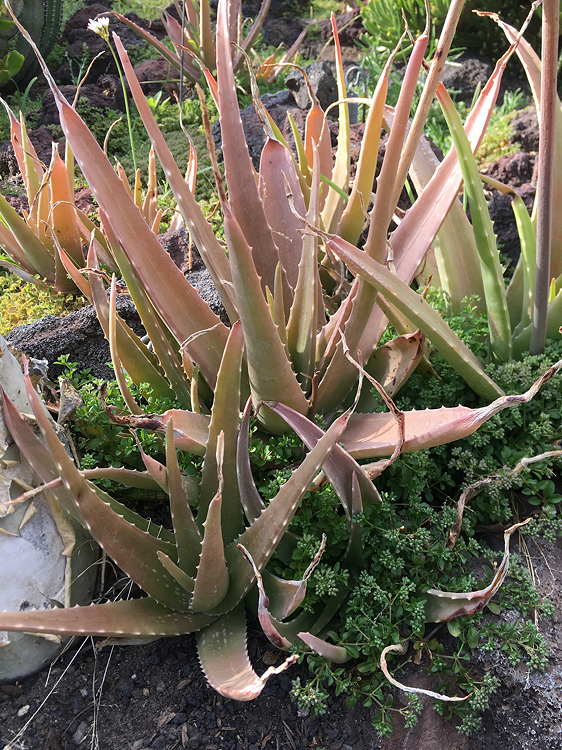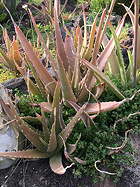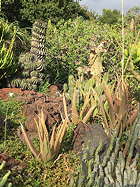This plant has been cultivated in botanical gardens since the 1960s as Aloe massawana Reynolds, but has not been widely grown by hobbyists. The Huntington received its material from the UC Berkeley garden (UCBG 70.548) in 1972, which in turn received the plant from Jay Dodson (one of the co-founders of the ISI) who in turn received it from the late John Lavranos, the foremost succulent explorer of his day (1926 – 2018), in 1970. Lavranos undoubtedly received it directly from Reynolds, who described A. massawana in 1959, naming the species for the Eritrean port of Massawa. When researching the name for this introduction, I consulted Aloe, The Definitive Guide (2011), but was confused by the range for this species given as “Dotted along the coast from Mozambique to Kenya …”. Eritrea is further yet to the north, and is not included in this range. The write-up goes on to explain that “Reynolds supposed that this species originated from Eritrea, but Carter et al. (1996) found it to be distinct.” What then is the plant from Eritrea? That did not become clear until consulting Carter et al. (1996), Kew Bulletin 51: 775 – 776, an article entitled “The identity of the Massawa Aloe”. In case you do not have ready access to Kew Bulletin, I’ll repeat here the summary at the head of the article which reads: “Aloe populations from Eritrea and Tanzania, formerly considered to represent a single species, are shown to be different and a new name, Aloe eumassawana, is provided for the Eritrean plants.” Unfortunately, the write-up for A. massawana in the Definitive Guide does not refer back to A. eumassawana treated 36 pages earlier, and the title of Carter et al. (1996) does not reveal the new name. Hence my confusion! The encapsulated clarification in the Definitive Guide entry for A. eumassawana reads: “When describing A. massawana, Reynolds concluded that the plants associated with old Arab graves near Dar es Salaam in Tanzania had been brought from near Massawa in Eritrea and he used one of these Tanzanian plants as his type. Since then, further material from both regions has been collected and Carter et al. (1996) proved the Eritrean plants to be distinct from the Tanzanian form …” in that the flowers are minutely pubescent while flowers of the Tanzanian plants are completely glabrous (among other differences). We offer tissue-cultured plants of HBG 29860, Reynolds s.n., collected May 26, 1966, at Massawa, Eritrea. $7.

Published in the Cactus and Succulent Journal, Vol. 90 (2), Summer 2018

